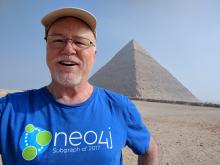Abstract
Availability is a tricky thing. In order for your tier 0 endpoints to be available all their hard dependencies have to be available. For Stytch that means basically network, compute, database, and messaging providers. For many of these things there are degraded experiences we can provide that are better than being hard down, but for a fair assessment of availability we have to define some minimum standard of functionality and measure our availability against that standard. In this session we'll cover all the measures we take to ensure that our databases stay up at least 99.999% of the time and that we can recover them gracefully in the event of many different disaster scenarios.
Speaker

Joshua Hight
Software Engineer @Stytch
Joshua started his career at IBM automating build and release processes for z/OS mainframe database software. He then spent some time at ThinAir Labs (a security startup) building a secure real-time document parsing and ingestion engine that could run on a laptop without activating the fan.
Afterwards he went to Rubrik (a backup and recovery company) and built out a more efficient alternative to MS SQL Server Log Shipping, then picked up a couple patents building an even more efficient alternative to that with a file-system filter driver and “synthetic snapshots” that – with some state machine abuse, can be taken on a secondary and restored to the primary.
Joshua then moved over to Doordash where he built a microservice generator that transpiled protobufs to service skeletons, architected Doordash’s first production Cassandra schema, and designed a new traceable asynchronous dependency resolution framework for the search service that more than halved the latency.
And finally, Joshua joined Stytch on the Infrastructure team and is currently working to level up our database infrastructure to ensure our performance and resilience lift up our developers and more importantly our customers.
Session Sponsored By

The most powerful identity platform built for developers.





